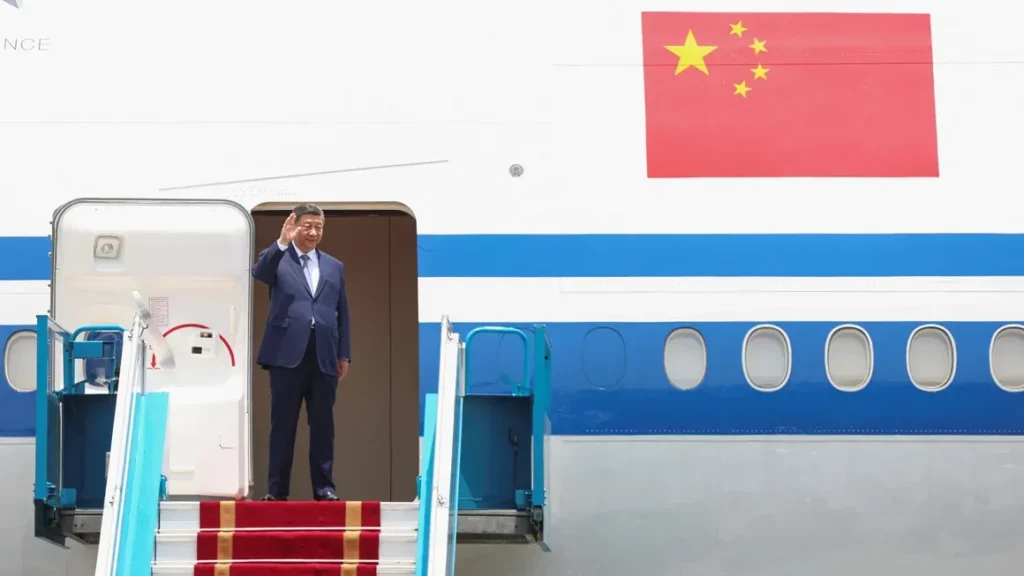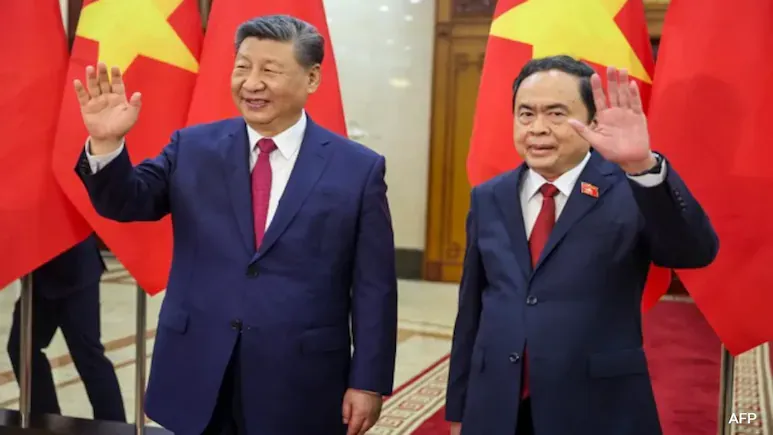Chinese President Xi Jinping’s recent visit to Vietnam marks a pivotal moment in the ongoing US-China trade war. As the United States, under President Donald Trump, enforces steep tariffs on Chinese goods and threatens similar measures against Vietnam, Xi’s diplomatic mission aims to reinforce China-Vietnam trade ties and present China as a stable economic partner in Southeast Asia.

China-Vietnam Trade Ties in the Spotlight
During his two-day stay in Hanoi, Xi Jinping and Vietnamese leaders signed around 40 cooperation agreements spanning manufacturing, supply chains, rail transport, and emerging sectors like artificial intelligence and green technology. These deals underscore both countries’ commitment to deepening economic integration, even as global supply chains shift in response to rising geopolitical tensions.
Vietnam, a major manufacturing hub and China’s largest trading partner in Southeast Asia, faces its own challenges. The US recently imposed a 46% tariff on Vietnamese goods, temporarily suspended for 90 days, while China continues to grapple with a 145% US tariff on its exports. Both nations are seeking ways to mitigate the impact of these trade barriers and maintain economic growth.
Xi Jinping’s Message: No Winners in a Trade War
Throughout his visit, Xi Jinping emphasized that trade wars and protectionism benefit no one. In a joint editorial published in Vietnamese and Chinese state media, he called for both countries to uphold multilateral trading systems, ensure stable global supply chains, and foster an open, cooperative international environment. This message directly contrasts with the US’s recent protectionist measures and positions China as a responsible global partner.
Navigating Complex Regional Dynamics
While the visit was marked by pageantry and public displays of camaraderie, underlying tensions remain. Vietnam continues to balance its deepening ties with both China and the US, wary of being perceived as favoring one side over the other. Territorial disputes in the South China Sea and concerns about being a conduit for Chinese goods into the US market add further complexity to the relationship.
Despite these challenges, both countries have signaled a willingness to manage differences through dialogue and cooperation, aiming to bring greater stability to the region during a period of global economic uncertainty.
President Xi Jinping attaches great importance to deepening the building of a #ChinaVietnam community with a shared future that carries strategic significance. Let's take a look at what he has said. #XiJinping pic.twitter.com/uzsO21n69x
— Xi's Moments (@XisMoments) April 13, 2025
Source:







